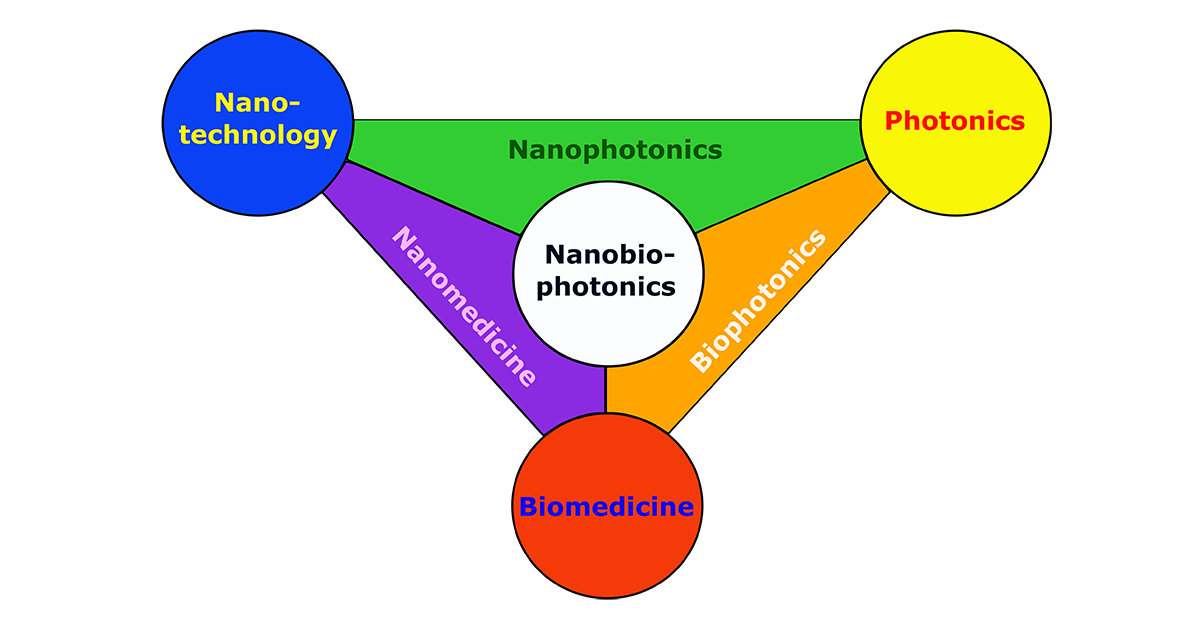- 5.2Impact Factor
- 10.5CiteScore
- 16 daysTime to First Decision
Nanobiophotonics: From Cell Imaging to Clinical Applications
This special issue belongs to the section “Cell Methods“.
Special Issue Information
Dear Colleagues,
Nanobiophotonics is a rapidly developing field of science that combines nanotechnology, biomedicine, and photonics. It involves interdisciplinary research and development in areas from the fundamental mechanisms of the interaction of light and nanomaterials with cells and tissues to clinical diagnosis and therapy. While nanophotonics focuses on the interactions between light and matter at the nanoscale, biophotonics deals with the interactions between light with biological materials and nanomedicine applies nanotechnology to the diagnosis, prevention, and treatment of diseases. Nanobiotechnology is at the interface of all these disciplines.
This Special Issue will cover advanced optical imaging techniques such as high-resolution fluorescence microscopy, Raman microspectroscopy, coherent anti-Stokes Raman spectroscopy (CARS), time-resolved fluorescence (FLIM), etc., as well as optical sensing techniques using various nanoparticles, quantum dots, and plasmonic nanostructures for intracellular diagnostics and light-induced therapy.
Dr. Liubov A. Osminkina
Guest Editor
Manuscript Submission Information
Manuscripts should be submitted online at www.mdpi.com by registering and logging in to this website. Once you are registered, click here to go to the submission form. Manuscripts can be submitted until the deadline. All submissions that pass pre-check are peer-reviewed. Accepted papers will be published continuously in the journal (as soon as accepted) and will be listed together on the special issue website. Research articles, review articles as well as short communications are invited. For planned papers, a title and short abstract (about 250 words) can be sent to the Editorial Office for assessment.
Submitted manuscripts should not have been published previously, nor be under consideration for publication elsewhere (except conference proceedings papers). All manuscripts are thoroughly refereed through a single-blind peer-review process. A guide for authors and other relevant information for submission of manuscripts is available on the Instructions for Authors page. Cells is an international peer-reviewed open access semimonthly journal published by MDPI.
Please visit the Instructions for Authors page before submitting a manuscript. The Article Processing Charge (APC) for publication in this open access journal is 2700 CHF (Swiss Francs). Submitted papers should be well formatted and use good English. Authors may use MDPI's English editing service prior to publication or during author revisions.
Keywords
- nanobiophotonics
- nanoparticles
- quantum dots
- plasmonic nanostructures
- optical imaging
- luminescent microscopy
- Raman
- optical biosensors
- photothermal therapy
- photodynamic therapy

Benefits of Publishing in a Special Issue
- Ease of navigation: Grouping papers by topic helps scholars navigate broad scope journals more efficiently.
- Greater discoverability: Special Issues support the reach and impact of scientific research. Articles in Special Issues are more discoverable and cited more frequently.
- Expansion of research network: Special Issues facilitate connections among authors, fostering scientific collaborations.
- External promotion: Articles in Special Issues are often promoted through the journal's social media, increasing their visibility.
- e-Book format: Special Issues with more than 10 articles can be published as dedicated e-books, ensuring wide and rapid dissemination.

